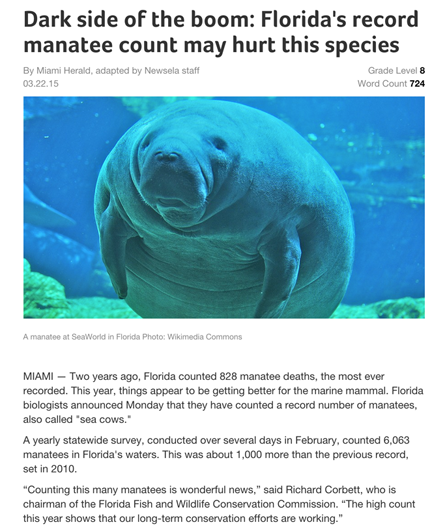This is a book recommendation. I read a variety of content because I believe my personal creativity works best when I feed it ideas. This might be described as reasoning by analogy, but I believe the focused approach of so many academics suffers from an influx of new, but existing perspectives.
I encourage those interested in generating instructional content to consider some of the ideas advanced by Jeff Jarvis on the news and the business of selling the news. Specifically, I recommend Geeks Bearing Gifts. If you are unwilling to spring for the $10 demanded by Amazon, Jarvis is also providing the same content as Buzzmachine posts. As I write this, he has made it to the latter chapters so you could read most of the book for free.
I want to highlight two ideas from the book which I think offer some interesting ideas for the educational publishing industry. There is much more to be had, but these are two ideas that immediately caught my attention.
Idea 1 – the article is not the only way to imagine the unit of distribution
I have long believed that a textbook has some specific limitations because it is offered as a single unit. Recognizing components would allow a number of limitations to be addressed (my analysis). Jarvis makes a similar case with the newspaper article. Most of us have a vague understanding of the format journalists often use to generate news articles. There is the initial summary, segments supporting and expanding this summary (quotes, background, deeper explanation), sources, etc. We probably learned somewhere that an article is originally written to gradually taper off should the editor have to shorten an article by cutting at the end. We may also be familiar with the issue of “burying the lead” in which an author misses what should have been the most important point and did not highlight it in the initial paragraph.
Jarvis does a nice job of pointing to experimental approaches related to the ideas he identifies. For example, he points to Circa News as a service built to use the elements of typical news articles more creatively. You can try Circa (optimized for reading content on your phone) and might want to review another of my posts on this service.
What insights might educational content providers gain? I think the idea of identifying the components in what we offer and possibly providing better ways to provide and develop these various components may be helpful.
Idea 2 – show me the money. How can professionals support their work?
Within the present reality of unlimited and often free online content, how can professional content providers and content organizations support their work? Clearly, the cost of textbooks has generated a lot of attention and scorn. Jarvis deals with the reality of business models throughout.
Here is one example of an idea I like. I would suggest I have had a related idea about educational content, but that is not the point here. Jarvis proposes that authors and readers represent a relationship that is not necessarily one directional. Relationships are a big thing in his book. He suggests one idea related to a more participatory approach I found intriguing. What if “readers” could buy down the cost of content in various ways (this is my interpretation and even if this is not what Jarvis intended I still like my spin)? This would obviously be more practical with a subscription model than a single purchase (a book). For example, a reader my buy down the cost by being willing to view ads (some free vs. paid services already use this approach). What if readers provide information (complete surveys) or even content (personal stories, examples) to reduce personal costs for the primary service? For example, I have proposed that practicing teachers might provide classroom examples as a way to supplement textbooks.
I know that making these ideas work would be a challenge. Implementation would not be that technically problematic, but it seems that it would be easy to game such systems without contributing much of value. Some type of evaluation would be necessary, expensive, and messy.
The Jarvis book has one major contribution I think is overlooked. When traditional models are obviously in decline, we should not assume that all is lost. New models that value quality will eventually be developed. The models in the book may not be the eventual successes, but it is reassuring to review ideas that exist and are interesting.
There may be comparable developments in the development of educational content. I just do not see traditional publishers investing much in R&D efforts. Perhaps someone will write something that will reassure me in the same way the Jarvis analysis brought me new insights into a different area of content generation.
![]()


You must be logged in to post a comment.